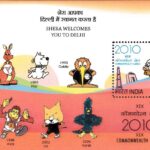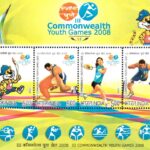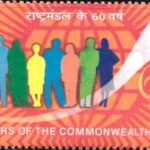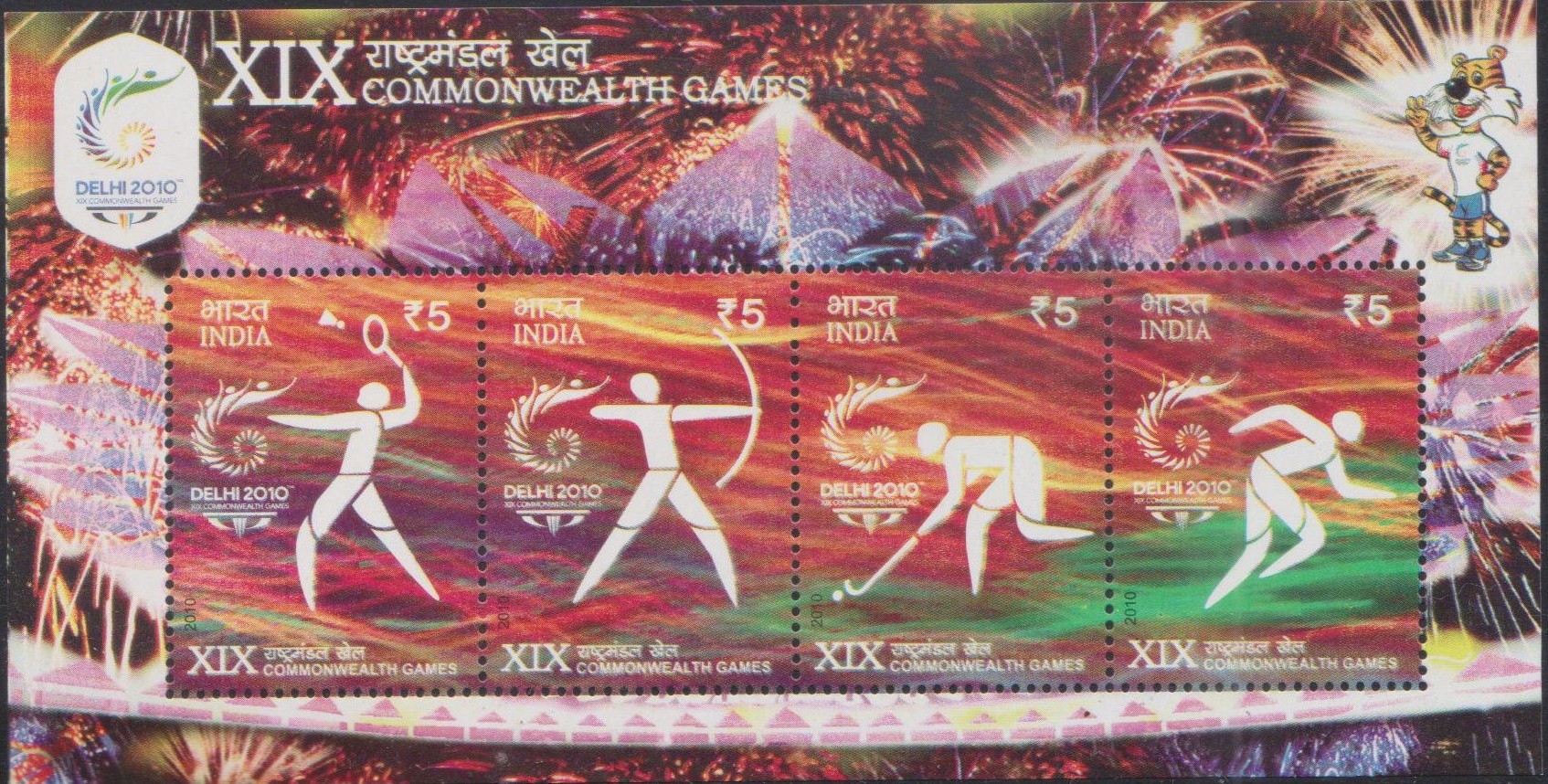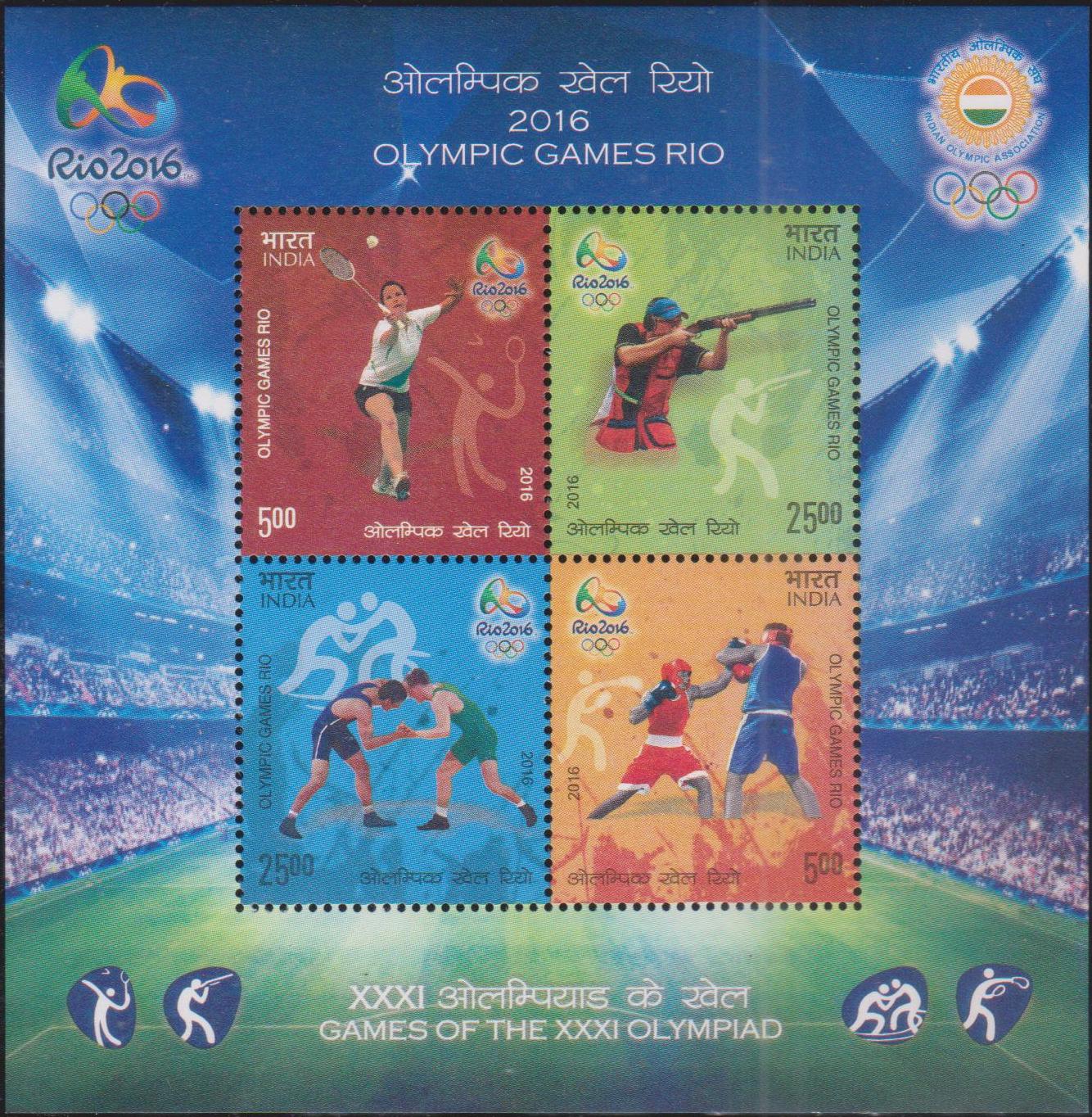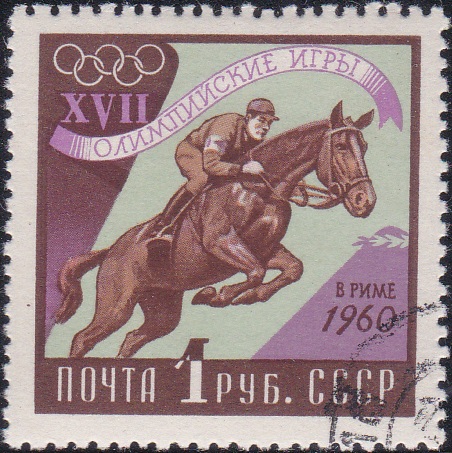
Australia on 1982 Commonwealth Games
Complete Set of 4 nos of postage stamps & 1 no. of Souvenir Sheet on the XII Commonwealth Games, Brisbane, Queensland in 1982 :
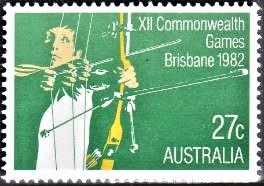
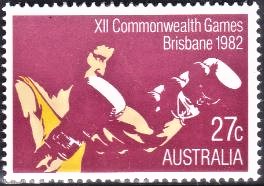
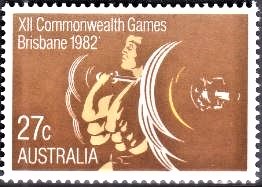


Issued by Australia
Issued on Sep 22, 1982
Issued for : Australia hosted the XII Commonwealth Games, held in Brisbane, Queensland, from 30 September to 9 October 1982.
Design : Four stamps were issued, featuring archery, boxing, weightlifting and pole vaulting. A miniature sheet was also issued, which reproduced the three base rate stamps. The 75c stamp was omitted because the existing dies manufactured for Australia Post miniature sheets have provision for three stamps only. Javelin throwing was illustrated on the first day cover of the stamps, reproduced above, and the start of a race on the miniature sheet first day cover.
Designer : Richard Cornielje [Mr Richard Cornielje was born in Alkmaar, north Holland, in 1947. His family migrated to Australia in 1950, and he studied graphic art at East Sydney Technical College. In 1966 he returned to Europe to further his studies in graphic design. After a decade of experience as a graphic designer and art director he returned to Australia to work as a freelance designer for some of Sydney‘s leading design studios and advertising agencies. The design of the commemorative stamps for the XII Commonwealth Games was Richard‘s first commission for Australia Post. During that time, he was employed as a Senior Art Director at George Patterson Ply Limited, Australia‘s largest advertising agency. Much of his spare time is spent with his two sons and daughter, with swimming, soccer and ballet classes.]
Type : Stamp, Mint Condition
Colour : Multi colour
Stamp denominations : 3 x 27 cents and 75 cents
Miniature sheet denominations : 3 x 27 cents
Stamp Size : 37.5 mm x 26 mm
Miniature sheet Size : 130 mm x 95 mm
Stamp Perforations : 14½ x 14½
Miniature sheet Perforations : 13¼ x 13
Paper : APWH stamp paper
Sheet content : 100 (issued)
Printing process : photolithography on a four–colour Roland Rekord press
Printer : Leigh–Mardon pty Limited, Melbourne
About :
- The first British Empire Games, as they were then known, were held in Hamilton, Canada, in 1930. Participating countries were Australia, Bermuda, British Guiana, Canada, England, Ireland, Newfoundland, New Zealand, Scotland, South Africa and Wales. The Games were based on the Olympic model, but with a prevailing spirit of friendliness rather than international rivalry. Since their inception, the Games have been held at four-yearly intervals; except during and immediately after the Second World War.
- Australia has been host nation twice previously: to the III British Empire Games, held in 1938 in Sydney; and to the VII British Empire and Commonwealth Games held in Perth in 1962. The several changes in name of the Games over the years reflect the changing nature of the character of the Commonwealth. Two stamps were issued to commemorate the 1962 Perth Games. The 5d denomination, designed by Malcolm Warner, featured the kangaroo paw, the floral emblem of Western Australia, with the city of Perth in the background. The Perth coat of arms was reproduced in the centre of George Hamori‘s design for the 2s 3d stamp, surrounded by sections of a victor’s wreath and a running track. Both stamps were photogravure printed by Harrison & Sons Ltd of London; the last to be printed abroad until the 1982 ‘Eucalypts‘ issue.
- The sports represented at the 1982 Brisbane Games were archery, athletics, badminton, boxing, cycling, lawn bowls, shooting, swimming and diving, weightlifting, and wrestling.
- These sports were selected with a view to the widest possible participation by Commonwealth nations, spectator appeal, and the level of facilities which could be provided in Brisbane. In addition, table tennis and Australian Rules football were selected as demonstration sports. The 36 hectare Queen Elizabeth II Jubilee Sports Centre at Nathan, eleven kilometres from the city, was the venue for all track and field events; supplemented by the multi-purpose sporting and cultural complex erected at Chandler, fifteen kilometres east of Brisbane. The 40 hectare Chandler site incorporates an aquatic centre, a velodrome, a weightlifting theatre and a badminton pavilion. Other Brisbane venues were provided for sports requiring specialised facilities.
- Archery, boxing, weightlifting and pole vaulting were chosen for the stamp issue as sports which had not previously been depicted on Australian stamps. Archery was included in the XII Commonwealth Games as a competitive sport for the first time. The venue for the archery events was the Murarrie Sports Ground, situated eight kilometres from the city. The site was reclaimed from swampland, and covers 34 hectares. This area is sufficient to allow for the north-south aspect required for this sport and for adequate safety margins.
- Boxing has been included as a sport in every Commonwealth Games since the 1930 British Empire Games at Hamilton. Boxing events at the Brisbane Games were held at Festival Hall in the central city area. The building was designed specifically for boxing, and seats 5,000 spectators.
- Weightlifting was first introduced as a Commonwealth Games sport at the 1950 Auckland Games. The weightlifting events at the 1982 Brisbane Games were conducted in the theatre at the new Chandler Sports Complex.
- Pole vaulting has been included as a track and field event since the 1930 Hamilton Games. In Brisbane, all track and field events were held at the Queen Elizabeth II Jubilee Sports Centre.
- The three stamps on the miniature sheet are arranged on blocks intended to represent the arrangement of the dais on which winners of Commonwealth Games events are presented with their medals.
- The outline of the symbol of the XII Commonwealth Games derives from the shape of a kangaroo in full flight. The three bands form a stylised version of the letter A, for Australia, in the colours of the Australian flag. The symbol was designed by Hugh Edwards, winner of a national competition held in 1978, and its use is subject to copyright. Australia Post reproduced the symbol on the miniature sheet with the permission of the XII Commonwealth Games Australia (1982) Foundation Limited.


